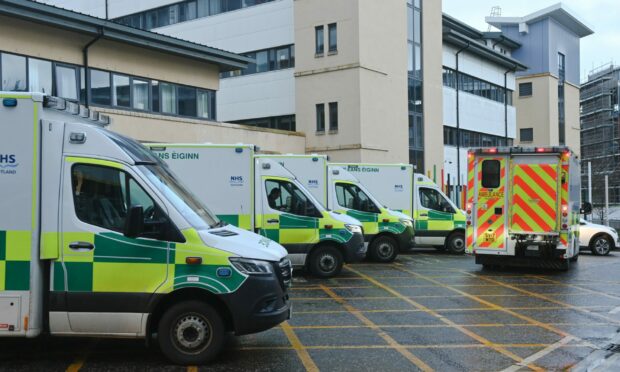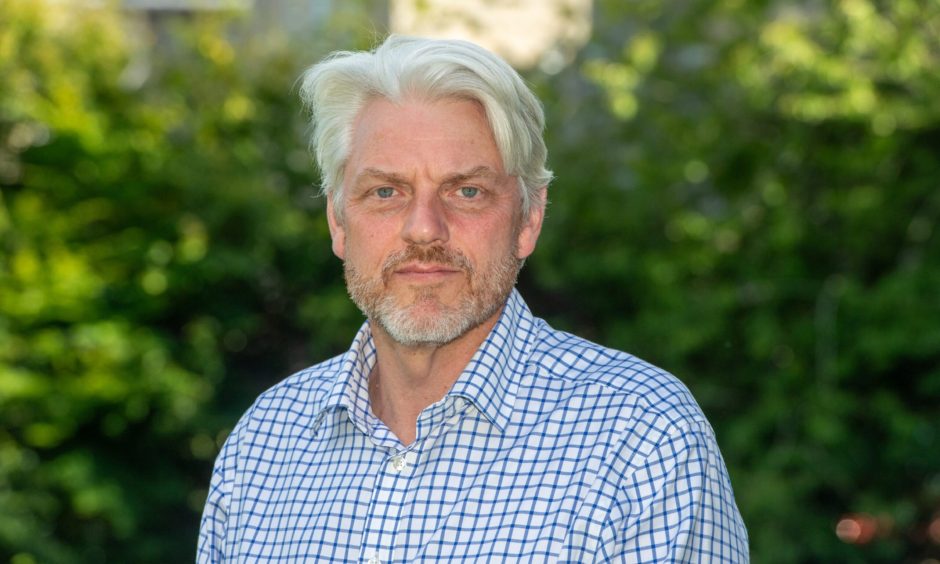The chief of the Scottish Ambulance Service says it is “disappointing” that “little meaningful progress” has been made to fix Aberdeen’s queues crisis.
Michael Dickson told the Press and Journal that ambulance crews on the frontline in the north-east are demoralised by the current state of affairs.
Earlier this year we revealed emergency vehicles were being forced to wait for up to four hours outside Aberdeen Royal Infirmary before handing over patients.
Mr Dickson says Aberdeen faces “unique” challenges due to the combination of patients from the city itself and surrounding rural areas.
He explained how many residents in smaller Aberdeenshire towns and villages can’t be treated locally when an emergency strikes.
That puts further strain on a service that’s already stretched.
Mr Dickson said national ambulance bosses are in regular contact with NHS Grampian as the hunt for a solution continues.
He spoke to the P&J after the Scottish Ambulance Service’s yearly review with the Scottish Government at its Edinburgh HQ.
“We’ve worked extensively with NHS Grampian,” he said.
“We’ve seen little meaningful progress.
“It is disappointing because the primary concern is patient safety.
“Ambulances are not hospitals. It’s not a place you want to spend many hours in.
“This has been a static problem.
“I recognise the frustrations crew have spoken to me about. It’s demoralising for them.”
Concerns will be growing as winter approaches.
NHS Grampian interim chief Adam Coldwells recently revealed the health board will add extra beds and create a new unit in its emergency care centre.
Mr Dickson told us the key to tackling long queues outside hospitals is improving the flow of patients through the hospital.
“If that flow isn’t occurring for a range of reasons, our hands, to a degree, are tied,” he said.
Sometimes more than a dozen ambulances have been queued outside Aberdeen Royal Infirmary at any one time.
That limits the number of emergency vehicles able to respond rapidly to calls elsewhere, especially in rural Aberdeenshire.
Torphins family’s nightmare
Last month we revealed a family in Torphins were forced to give CPR to their newborn baby while waiting more than 30 minutes for an ambulance.
The call was taken by a handler in Yorkshire, who struggled to find their address.
An investigation into the family’s ordeal is ongoing.
Mr Dickson said ambulance chiefs were sorry.
“We understand how worrying it is if you’re talking to someone who might not know the local geography,” he said.
The ambulance boss explained an “overflow” system redirects calls elsewhere when lines are busy.
But the decision to send an emergency vehicle would have reverted back to the local control centre.
Mr Dickson said the horrific case showed why being able to free up ambulances is so important.
“There is a link to the issue we were talking about earlier,” he told us. “We know how pressured our system was at that time.
“Our closest resource was further away than we would want it to be.”
Jenni Minto, the SNP’s public health minister, is also horrified by the long wait endured by the family in Torphins.
“I can’t imagine being in that situation with your young baby requiring CPR,” she said. “For that situation to arise, something wasn’t right.”
She said the current crisis in Aberdeen was “concerning”.
But she added: “I’d be tempted to say, though, that the geography of Aberdeenshire hasn’t changed, so we have to understand what is causing the problems.”
NHS Grampian has the lowest number of beds in Scotland relative to the number of people it serves.
It was found the health board operates efficiently given its limited resources.
An NHS Grampian spokesperson said: “Ambulances having to wait at the front door is regrettable and we apologise to anyone who has been impacted by this.
“Our hospitals are currently facing sustained pressure due to the volume of acutely ill patients arriving, delayed discharges, capacity in community healthcare settings, and staffing pressures.
“This can unfortunately lead to ambulances having to wait at the front door, as we are unable to admit more patients to the department.”




Conversation